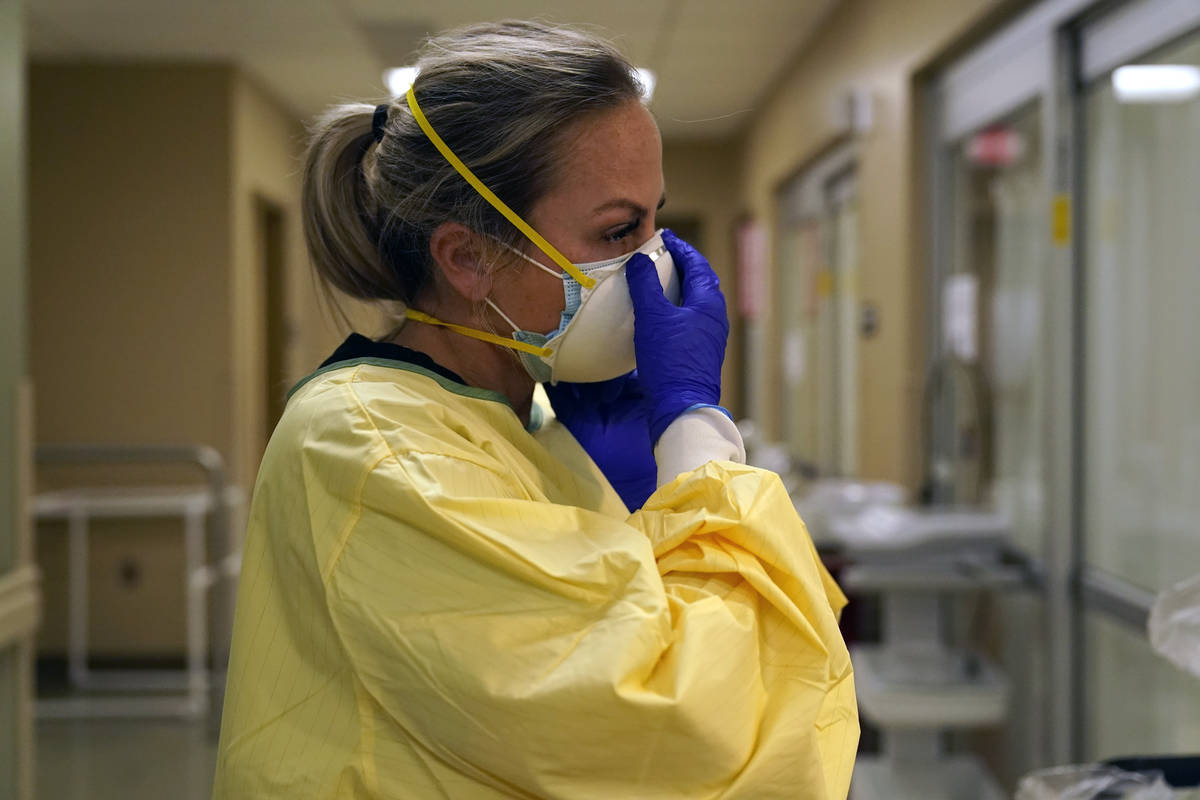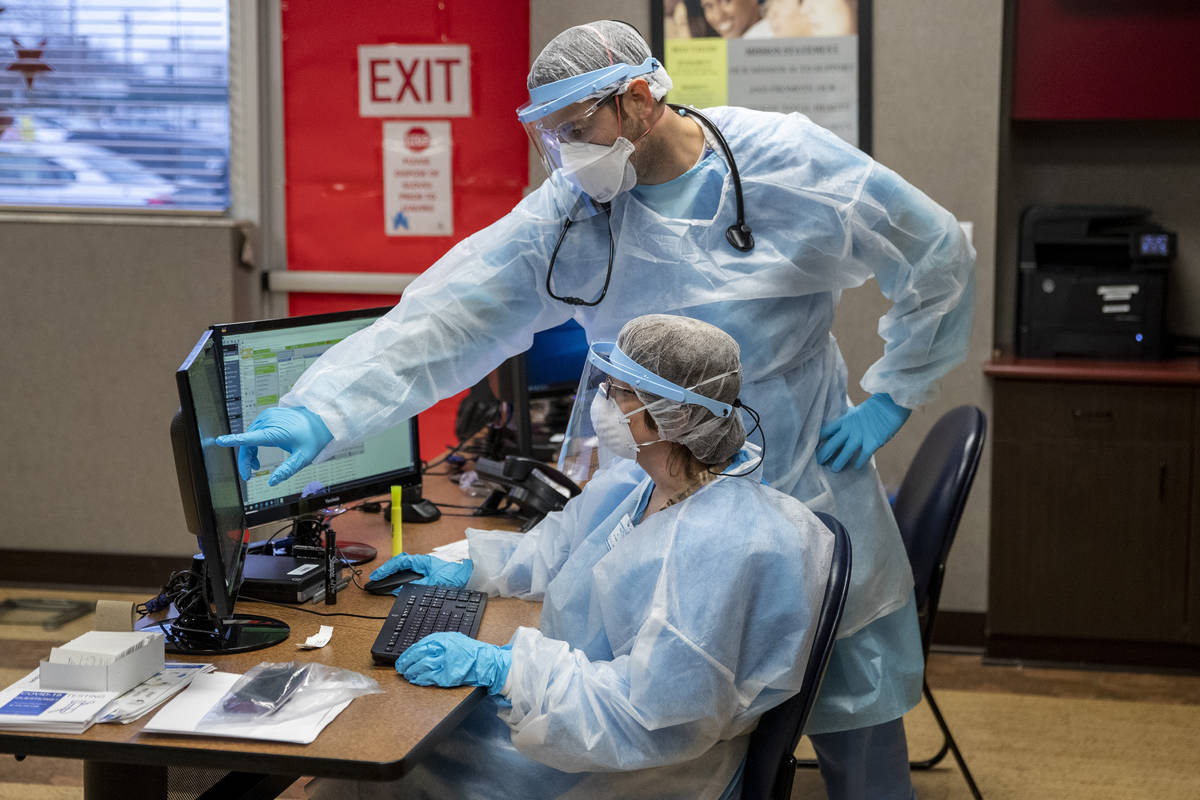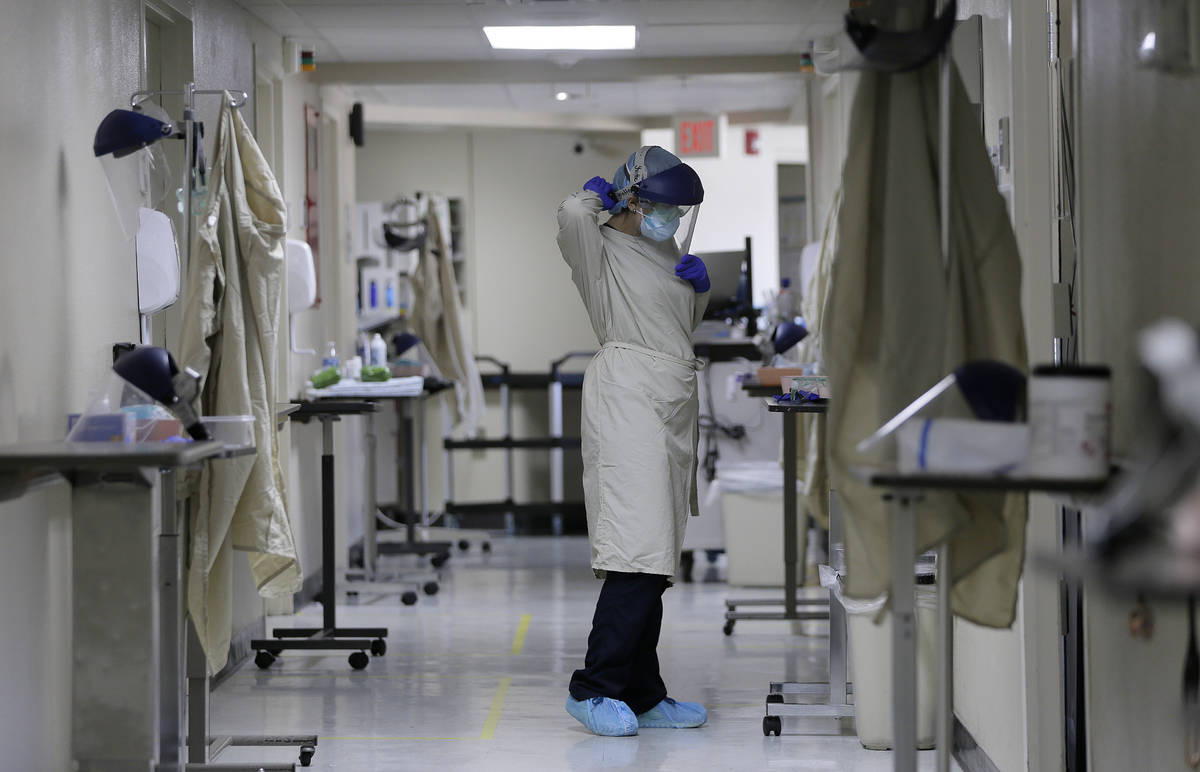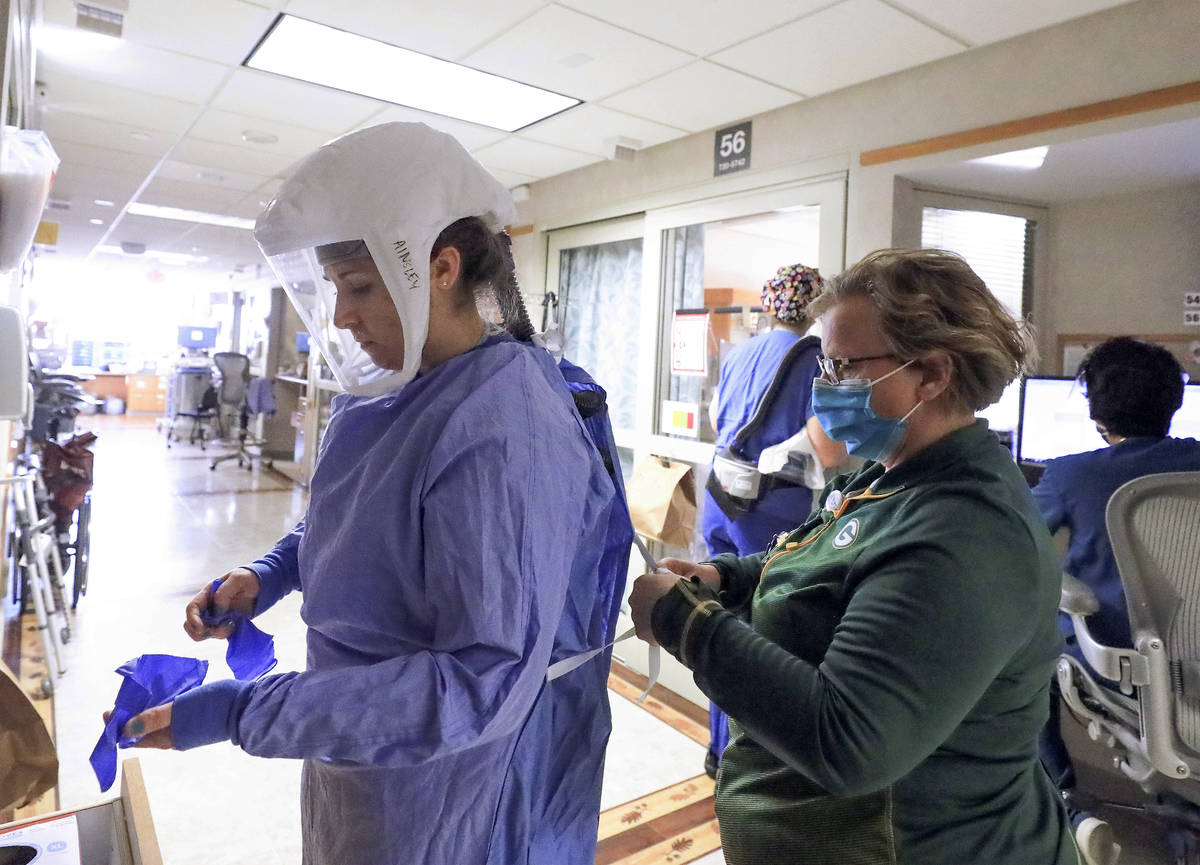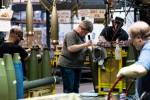3.1K die in single day as COVID-19 infects 200K daily
The U.S. recorded more than 3,100 COVID-19 deaths in a single day, obliterating the record set last spring, while the number of Americans hospitalized with the virus has eclipsed 100,000 for the first time and new cases are topping 200,000 a day, according to figures released Thursday.
The three benchmarks altogether showed a country slipping deeper into crisis, with perhaps the worst yet to come, in part because of the delayed effects from Thanksgiving, when millions of Americans disregarded warnings to stay home and celebrate only with members of their household.
Across the U.S., the surge has swamped hospitals with patients and left nurses and other health care workers shorthanded and burned out.
“The reality is December and January and February are going to be rough times. I actually believe they are going to be the most difficult time in the public health history of this nation,” Dr. Robert Redfield, head of the Centers for Disease Control and Prevention, said Wednesday.
Health authorities had warned that the numbers could fluctuate strongly before and after Thanksgiving, as they often do around holidays and weekends, when because of reporting delays, figures often drop, then rise sharply a few days later as state and local agencies catch up with the backlog.
Still, deaths, hospitalizations and cases in the U.S. have been on a fairly steady rise for weeks, sometimes breaking records for days on end.
The U.S. recorded 3,157 deaths on Wednesday, according to the tally kept by Johns Hopkins University. That’s more than the number of people killed on 9/11, and it shattered the old mark of 2,603, set on April 15, when the New York metropolitan area was the epicenter of the U.S. outbreak.
The number of people in the hospital likewise set an all-time high Wednesday, according to the COVID Tracking Project. It has more than doubled over the past month.
Also, the number of newly confirmed infections climbed just over 200,000 Wednesday for the second time in less than a week, by Johns Hopkins’ count.
Hospitals overrun
U.S. hospitals slammed with COVID-19 patients are trying to lure nurses and doctors out of retirement, recruiting students and new graduates who have yet to earn their licenses and offering eye-popping salaries in a desperate bid to ease staffing shortages.
With the virus surging from coast to coast, the number of patients in the hospital with the virus has more than doubled over the past month to a record high of nearly 100,000, pushing medical centers and health care workers to the breaking point. Nurses are increasingly burned out and getting sick on the job, and the stress on the nation’s medical system prompted a dire warning from the head of the Centers for Disease Control and Prevention.
“The reality is December and January and February are going to be rough times. I actually believe they are going to be the most difficult time in the public health history of this nation,” Dr. Robert Redfield said.
Governors in hard-hit states like Wisconsin and Nebraska are making it easier for retired nurses to come back, including by waiving licensing requirements and fees, though it can be a tough sell for older nurses, who would be in more danger than many of their colleagues if they contracted the virus.
Some are taking jobs that don’t involve working directly with patients to free up front-line nurses, McMillan said.
Emergency licenses in Iowa
Iowa is allowing temporary, emergency licenses for new nurses who have met the state’s educational requirements but haven’t yet taken the state licensing exam. Some Minnesota hospitals are offering winter internships to nursing students to boost their staffs. The internships are typically offered in the summer but were canceled this year because of COVID-19.
Methodist Hospital in Minneapolis will place 25 interns for one to two months to work with COVID-19 patients, though certain tasks will remain off-limits, such as inserting IVs or urinary catheters, said Tina Kvalheim, a nurse who runs the program.
“They’ll be fully supported in their roles so that our patients receive the best possible, safe care,” Kvalheim said..
Landon Brown, 21, of Des Moines, Iowa, a senior nursing student at Minnesota State University, Mankato, recently accepted an internship at the Mayo Clinic Health System in Mankato. He was assigned to the pediatric unit’s medical-surgical area but said he might come across patients with the coronavirus.
Brown’s resolve to help patients as a nurse was reaffirmed after his 90-year-old grandfather contracted the virus and died over the weekend.
“The staff that he had were great, and they really took a lot of pressure off of my folks and my family,” he said. “I think that if I can be that for another family, that would be great.”
The University of Iowa’s College of Nursing is also trying to get graduates into the workforce quickly. It worked to fast-track students’ transcripts to the Iowa Board of Nursing so they could get licensed sooner upon graduating, said Anita Nicholson, associate dean for undergraduate programs.
Nicholson said the college also scheduled senior internships earlier than normal and created a program that allows students to gain hospital experience under a nurse’s supervision. Those students aren’t caring for coronavirus patients, but their work frees up nurses to do so, Nicholson said.
“The sooner we can get our graduates out and into the workforce, the better,” she said.
$15K bonus in Wisconsin
Wausau, Wisconsin-based Aspirus Health Care is offering signing bonuses of up to $15,000 for nurses with a year of experience.
Hospitals also are turning to nurses who travel from state to state. But that’s expensive, because hospitals around the country are competing for them, driving salaries as high as $6,200 per week, according to postings for travel nursing jobs.
April Hansen, executive vice president at San Diego-based Aya Healthcare, said there are now 31,000 openings for travel nurses, more than twice the number being sought when the pandemic surged in the spring.
“It is crazy,” Hansen said. “It doesn’t matter if you are rural or urban, if you are an Indian health facility or an academic medical center or anything in between. … All facilities are experiencing increased demand right now.”
Nurses who work in intensive care and on medical-surgical floors are the most in demand. Employers also are willing to pay extra for nurses who can show up on short notice and work 48 or 60 hours per week instead of the standard 36.
Laura Cutolo, a 32-year-old emergency room and ICU nurse from Gilbert, Arizona, began travel nursing when the pandemic began, landing in New York during the deadliest stretch of the U.S. outbreak last spring. She is now working in Green Bay, Wisconsin, and soon will return to New York.
She said she hopes her work will be an example to her children, now 2 and 5, when the crisis passes into history and they read about it someday.
“If they ask me, ‘Where were you?’ I can be proud of where I was and what I did,” Cutolo said.
Doctors are in demand, too.
“I don’t even practice anymore, and I’ve gotten lots of emails asking me to travel across the country to work in ERs,” said Dr. Georges Benjamin, executive director of the American Public Health Association.
270K dead, 13.8M infected
The outbreak in the U.S. is blamed for more than 270,000 deaths and 13.8 million confirmed infections. New cases are running at over 160,000 a day on average, and deaths are up to more than 1,500 a day, a level seen back in May, during the crisis in the New York City area. Several states reported huge numbers of new cases Wednesday, including a combined 40,000 in California, Illinois and Florida alone.
States are seeing record-breaking surges in deaths, including Illinois, Indiana and Kentucky in the middle of the country. Kentucky Gov. Andy Beshear said the virus is “spreading like wildfire.”
A COVID-19 vaccine is expected to become available in a few weeks, and health care workers are likely to be given priority for the first shots. That could make it easier for hospitals to recruit help.
To make room for the sickest, hard-hit institutions are sending home some COVID-19 patients who otherwise would have been kept in the hospital. They are also canceling elective surgeries or sending adult non-COVID-19 patients to pediatric hospitals.
A hospital system in Idaho is sending some COVID-19 patients home with iPads, supplemental oxygen, blood pressure cuffs and oxygen monitors so they can finish recovering in their own beds. The computer tablets enable nurses to check in with them, and the oxygen monitors automatically send back vital information.
Across the U.S., hospitals are converting cafeterias, waiting rooms, even a parking garage to patient treatment areas. Some states are opening field hospitals.
But that does nothing to ease the staffing shortage, especially in rural areas where officials say many people aren’t taking basic precautions against the virus.
Dr. Eli Perencevich, an epidemiology and internal medicine professor at the University of Iowa, said health care workers are paying the price for other people’s refusal to wear masks.
“It’s sending everyone to war, really,” he said. “We’ve decided as a society that we’re going to take all the people in our health care system and pummel them because we have some insane idea about what freedom really is.”



